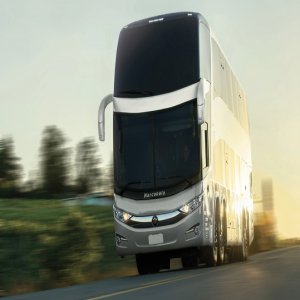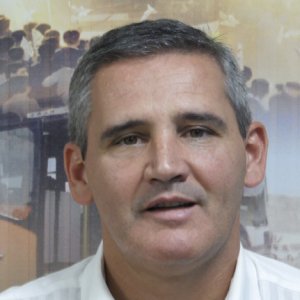Betting on Mexico's Natural Gas Future

STORY INLINE POST
Q: Given that the bus segment is Scania’s strongest market in Mexico, which products have been the most popular?
A: Traditionally, Scania in Mexico has been truly successful with long-distance buses, holding 54% of Mexico’s market share in 2015. Given that this is already a strong position, Scania is now focusing on urban buses. We are strong players in this segment in Latin America, Europe, and Asia, but we still have to develop our share in Mexico outside of Mexico City, Puebla, and Leon. We have been really successful with this strategy during 2015, since only Scania buses were used in the Mexibus project in the State of Mexico, as well as in Puebla’s BRT program. We are now working on new projects in Mexico City, including one of the main avenues in the city. In addition, Queretaro, Monterrey, Guadalajara, Torreon, and several other states have interesting developments in the pipeline where Scania is obviously looking to have strong participation. We are now seeing proper structural planning with our clients, which means that with the right vehicles we could develop proper routes designed for the exact number of people that will use them.
Q: What fuels do you see becoming the next trend in the transportation industry?
A: Scania’s vehicle portfolio includes buses with diesel, natural gas, and ethanol engines. The latter is not regulated in Mexico, which makes it impossible for us to offer it in the market. We are working with the Ministry of the Environment and Natural Resources (SEMARNAT) on this, but it will take some time to develop. We also have biodiesel capabilities; in fact, every Scania bus sold during 2015 has the capacity to run on both diesel and biodiesel. We are the only company that offers this flexibility. However, our strongest bet for Mexico is natural gas. At the moment, natural gas units have marginal revenues, but we expect 35% of our sales to be based on these engines by 2020. The industry has a strong tradition of operating with diesel, which might hinder the transition. Even so, we are promoting tests that will show the efficiency of these vehicles. Particulate matter is the biggest health concern in Mexico City, and in that regard, gas engines are 98% more effective than diesel. If you add price range into the equation, it is absurd not to think about moving to different energy sources. I believe that by 2025 over 50% of the country’s urban vehicles will run on natural gas. There are currently some small gas vehicles in Queretaro, but we want to introduce vehicles that can handle a large amount of people. This transition will possibly lower pressure on fares, as well. Fuel represents 40% of the total operating costs in most bus networks. Therefore, if the energy source is cheaper, fares will be too.
Mexico is now also requesting low-entry buses in many cities. These units are built so they do not need any steps at the entrance, making boarding faster and easier. This reduces emissions from the bus and from the cars waiting behind it. They also have the advantage that unlike low-floor buses, they have a significant ground clearance, allowing them to function on all roads in Mexico City. Furthermore, the chassis price difference between normal and low-floor buses is 5%, making low-entry units a common trend in public transportation.
Q: What unique advantages do Scania’s natural gas engines offer to its clients?
A: Mexico City is located at 2,200m above sea level and Scania’s natural gas engines are able to run at 3,000m. Eighteen years ago, most vehicles powered by natural gas could only operate at 700m. We are the first company to have developed this technology, while most other companies can reach only 1,800m. Additionally, our engines can generate the same torque as our competitors with fewer revolutions, which translates to less energy consumption and less maintenance for the vehicle. In terms of natural gas, most locations have different gas specifications, forcing manufacturers to develop their engines accordingly. This might create problems when traveling out-of-state, which is precisely why this technology was developed for inner-city transportation. To address this issue, our engines have a sensor in the fuel tank that detects what type of gas is being used, automatically adjusting the engine to run optimally.
Q: Do you see a bright future for gas engines in the coach segment?
A: Mostly, I see a future in the short and medium term for staff transportation and suburban buses. Nevertheless, there are still some challenges we need to face in the coach segment. Natural gas units take away space for luggage, which is a must in the Mexican market. In addition, coaches need a higher horsepower output, which is difficult to generate with natural gas. Our engines currently generate 340hp, but we would have to increase that to 400hp. Nevertheless, if natural gas prices remain as they are right now, gas vehicles will be the victors. It will all come down to energy prices.
Q: Besides low-entry buses and gas engines, what other developments is Scania currently working on?
A: In terms of safety, every bus we manufacture has ABS braking systems. In addition, we have developed an electronic emergency brake that reacts automatically if it detects a drastic distance reduction between the bus and a random object. Visibility is also becoming an issue, so we have created flat nose or short cabin buses, which improve both the visibility and handling of the unit. Additionally, we are now distributing our Scania Communicator system with every new vehicle, linking directly with Scania Fleet Management Services. Line 2 of Mexibus in the State of Mexico has this device, and it has been a huge support for the management and maintenance of every unit. We are also working on the new Scania Watch where customers can see data about their trucks on the go. There is a lot of growth potential in Mexico, but there are still many barriers for us. Given that 100% of Scania’s truck production follows short cabin specifications, we did not even consider selling our trucks in Mexico before NOM-012 was implemented. Measuring trucks bumper-to-bumper is now a global trend, but it took a while to enter North America due to the influence the US has on Mexico and Canada.
Q: How has Scania evolved in terms of sales and after sales services?
A: Just as in every other location around the world, service is Scania’s main focus in Mexico. In April 2015, we inaugurated our spare parts hub called Middle American Parts Center, allowing us to cover 95% of our clients’ demands straight away. We have our own service network with 47 points of sale and workshops in San Luis Potosi, Puebla, Monterrey, Guadalajara, Torreon, and several other locations, none of which are third-party distributors except for Cancun. Additionally, Scania has a total of 600 employees in Mexico of which 520 are focused on after- sales services. All these strategies give us a 65% after- sales penetration among our clients, with more than 2,800 signed maintenance agreements with Mexican customers. This is a record for the domestic market, as many of our competitors do not reach a 5% share.























